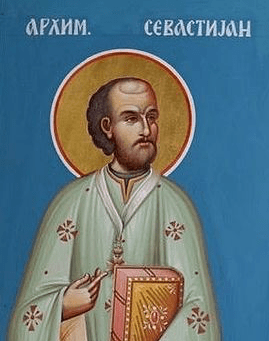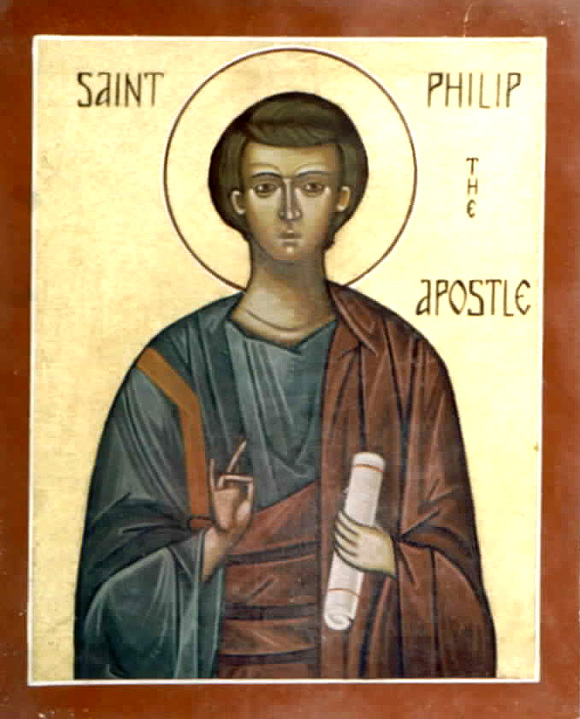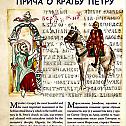Science
Twenty-seventh Sunday after Pentecost The Healing of the Woman with a Spirit of Infirmity
2. December 2018 - 14:05 (Lk. 13:10-17) -From the Explanation of the Gospel of St. Luke by Blessed Theophylact, Archbishop of Ochrid
(Lk. 13:10-17) -From the Explanation of the Gospel of St. Luke by Blessed Theophylact, Archbishop of Ochrid
10-17. And He was teaching in one of the synagogues on the Sabbath. And, behold, there was a woman who had a spirit of infirmity eighteen years, and was bent over, and could in no wise straighten herself. And when Jesus saw her, He called her to Him, and said unto her, Woman, thou art loosed from thine infirmity. And He laid His hands on her: and immediately she was made straight, and glorified God. And the ruler of the synagogue answered with indignation, because Jesus had healed on the sabbath day, and said unto the people, There are six days in which men ought to work: in them therefore come and be healed, and not on the sabbath day. The Lord then answered him, and said, Thou hypocrite, doth not each one of you on the sabbath loses his ox or his ass from the stall, and lead it away to watering? And ought not this woman, being a daughter of Abraham, whom Satan hath bound, lo, these eighteen years, be loosed from this bond on the sabbath day? And when He had said these things, all His adversaries were ashamed: and all the people rejoiced for all the glorious things that were done by Him.
The woman suffered from this affliction as a result of a demonic assault, as the Lord Himself says, This woman, whom Satan hath bound, lo, these eighteen years.
St. Gregory the Wonderworker of Neocaesarea
30. November 2018 - 16:24 Saint Gregory the Wonderworker, Bishop of Neocaesarea, was born in the city of Neocaesarea (northern Asia Minor) into a pagan family. Having received a fine education, from his youth he strived for Truth, but the thinkers of antiquity were not able to quench his thirst for knowledge.
Saint Gregory the Wonderworker, Bishop of Neocaesarea, was born in the city of Neocaesarea (northern Asia Minor) into a pagan family. Having received a fine education, from his youth he strived for Truth, but the thinkers of antiquity were not able to quench his thirst for knowledge.
For the continuation of his studies Saint Gregory went to Alexandria, known then as a center for pagan and Christian learning. The youth, eager for knowledge, went to the Alexandrian Catechetical School, where the presbyter Origen taught. Origen was a famous teacher, possessing a great strength of mind and profound knowledge. Saint Gregory became a student of Origen. Afterwards, the saint wrote about his mentor: “This man received from God a sublime gift, to be an interpreter of the Word of God for people, to apprehend the Word of God, as God Himself did use it, and to explain it to people, insofar as they were able to understand it.” Saint Gregory studied for eight years with Origen, and was baptized by him.
St. Sebastian (Dabovich) of Jackson
30. November 2018 - 16:21 Saint Sebastian was just glorified by the Holy Assembly of Hierarchs of the Serbian Orthodox Church during its regular session on May 29th, 2015 – alongside with Bishop Mardarije (Uskokovic). Glory be to God in His saints!
Saint Sebastian was just glorified by the Holy Assembly of Hierarchs of the Serbian Orthodox Church during its regular session on May 29th, 2015 – alongside with Bishop Mardarije (Uskokovic). Glory be to God in His saints!
Born to Serbian immigrants in San Francisco in 1863, Archimandrite Sebastian Dabovich has the distinction of being the first person born in the United States of America to be ordained as an Orthodox priest, [1] and also the first native-born American to be tonsured as an Orthodox monk. His greatest distinction, however, lies in the tremendous apostolic, pastoral, and literary work that he accomplished during the forty-eight years of his priestly ministry. Known as the “Father of Serbian Orthodoxy in America,” [2] he was responsible for the founding of several of the first Serbian churches in the New World. This, however, was only one part of his life’s work, for he tirelessly and zealously sought to spread the Orthodox Faith to all peoples, wherever he was called. He organized parish communities of Orthodox Christians of varied ethnic backgrounds; took part in the work of St. Alexis Toth of Wilkes-Barre to bring former Uniates more fully into the Orthodox ethos and way of life
Orthodox Educational Magazine for Children - Nativity 2019
28. November 2018 - 10:33The Department of Christian Education of the Eastern American Diocese is delighted to introduce The Nativity, Nativity, Blessed Day, a bilingual educational journal for children.
Comprised of numerous exquisite illustrations, inspiring stories, and an graphic design, the Magazine is designed to convey the beauty of the mystery of the Nativity of Christ to children in a more creative fashion.
Nativity Fast
27. November 2018 - 16:40 Make ready, O Bethlehem: let the manger be prepared, let the cave show it's welcome. The truth has come, the shadow has passed away...
Make ready, O Bethlehem: let the manger be prepared, let the cave show it's welcome. The truth has come, the shadow has passed away...
On November 15th we begin the forty day period where we proclaim the miracle of God becoming
Holy All-Praised Apostle Philip
27. November 2018 - 16:35 The Holy and All-praised Apostle Philip was a native of the city of Bethsaida in Galilee. He had a profound depth of knowledge of the Holy Scripture, and rightly discerning the meaning of the Old Testament prophecies, he awaited the coming of the Messiah. Through the call of the Savior (John 1:43), Philip followed Him. The Apostle Philip is spoken about several times in the Holy Gospel: he brought to Christ the Apostle Nathaniel (i.e. Bartholomew, April 22, June 30, and August 25. See John. 1:46). The Lord asks him where to buy bread for five thousand men (John. 6: 5-7). He brought certain of the Hellenized Jews wanting to see Jesus (John. 12:21-22); and finally, at the Last Supper he asked Christ to show them the Father (John. 14:8).
The Holy and All-praised Apostle Philip was a native of the city of Bethsaida in Galilee. He had a profound depth of knowledge of the Holy Scripture, and rightly discerning the meaning of the Old Testament prophecies, he awaited the coming of the Messiah. Through the call of the Savior (John 1:43), Philip followed Him. The Apostle Philip is spoken about several times in the Holy Gospel: he brought to Christ the Apostle Nathaniel (i.e. Bartholomew, April 22, June 30, and August 25. See John. 1:46). The Lord asks him where to buy bread for five thousand men (John. 6: 5-7). He brought certain of the Hellenized Jews wanting to see Jesus (John. 12:21-22); and finally, at the Last Supper he asked Christ to show them the Father (John. 14:8).





